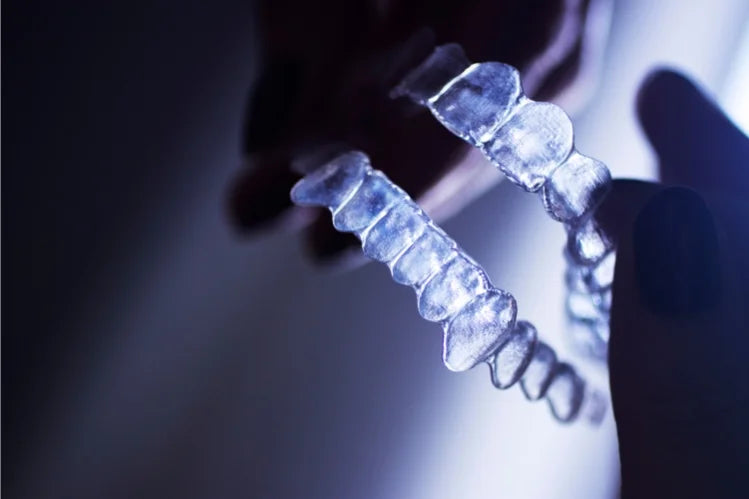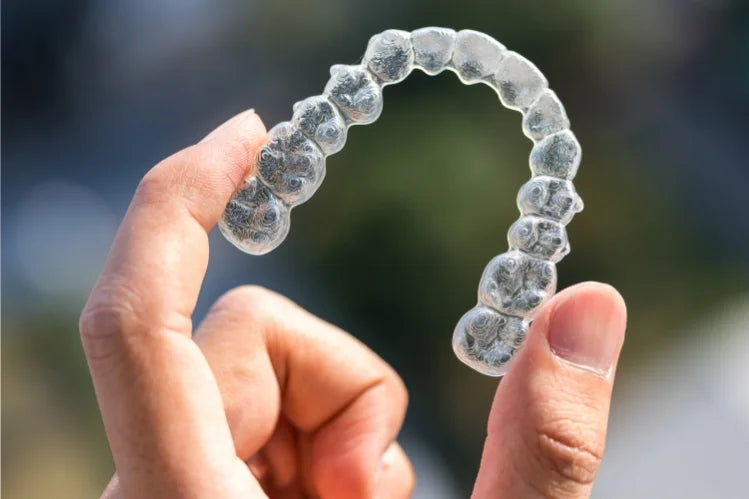Table of Contents
Every person dreams of a perfect smile. But are you experiencing a misaligned smile? It is because teeth shifting compromises your aesthetics as well. Your dental condition depends on multiple factors and activities. In this blog, we will understand teeth shifting, its causes, symptoms, and solutions.
Understanding Teeth Shifting
If you think of your teeth as immovable objects, you are wrong. Teeth shifting is a phenomenon in which your teeth realign themselves. Therefore, the correct positioning of your teeth is disturbed.
Causes of Teeth Shifting
The following are some causes of teeth shifting:
-
Tooth Loss

Tooth loss leading to teeth shifting A person loses a tooth due to trauma or any gum disease that leaves gaps between the smile. This condition destabilizes the alignment of your teeth and allows other teeth to move.
-
Dental Relapse
If a person has undergone a teeth straightening treatment, there are higher chances of a dental relapse. As your teeth are not habitual of the new position, they might shift back to their original position, leading to teeth shifting.
-
Bruxism
Bruxism is a dental term used for teeth grinding and clenching. When you go through this condition, you place pressure on your teeth, which misaligns them.
-
Childhood Habits
One of the common causes of teeth shifting is childhood habits such as thumb sucking or tongue thrusting. This tilts or shifts your teeth, affecting the tooth structure of your smile.
Symptoms of Teeth Shifting
The following symptoms will help you know that you are going through teeth shifting:
-
Change in Bite
When you bite or chew the food, you may experience slight discomfort and change. When your upper and lower jaws do not meet, take it as a sign of teeth shifting.
-
Visible Gaps or Crowding
When the alignment of your teeth is shifted from the original position, it leads to visible gaps. Not only this, but your teeth might overlap as well, leading to a crowded smile.
-
Sensitivity
Teeth shifting weakens the teeth and can also damage enamel. This leads to tooth sensitivity.
Solutions of Teeth Shifting
Now that we know the causes and symptoms of teeth-shifting, let's explore its solutions.
-
Orthodontic Treatment

Woman putting on clear aligners to prevent teeth shifting If your smile is misaligned, you can treat it with the help of orthodontic treatment. Your dental treatment depends on the severity of your dental condition. The following are two important ways to align your smile:
Metal Braces: In traditional metal braces treatment, metal brackets are attached to your teeth with wires. This treatment is suitable for severe dental conditions.
Clear Aligners: Clear aligners are customized plastic dental trays that offer a snug fit to your smile. This treatment is suitable for mild to moderate dental conditions.
-
Retainers
To prevent dental relapse, retainers are used to protect your smile. They are custom-fit and lock in your teeth to the desired position.
-
Treating Bruxism
Bruxism is one of the causes of teeth shifting, which makes it important to protect your smile at night. A night guard is a helpful device, acting as a barrier between your jaws.
To sum it up, the progress in orthodontics offers a convenient way to protect your smile. It has different causes, symptoms, and solutions. Opt for comfortable orthodontic treatment with ALIGERCO. Be it night guards, retainers, or clear aligners, we keep in mind your comfort and convenience. Prevent teeth shifting by protecting your smile with us.
FAQs
1. What are clear aligners?
Clear aligners are customized dental trays that are placed inside your mouth. They apply gentle pressure to your teeth and shift them to the desired position.
2. Are clear aligners more comfortable than the metal braces treatment?
Yes! Clear aligners are more comfortable as they do not irritate your gums. Unlike metal braces, they require fewer dental visits for their adjustments.















